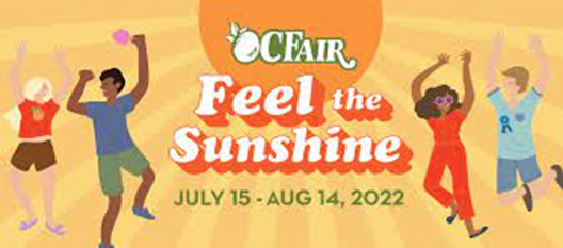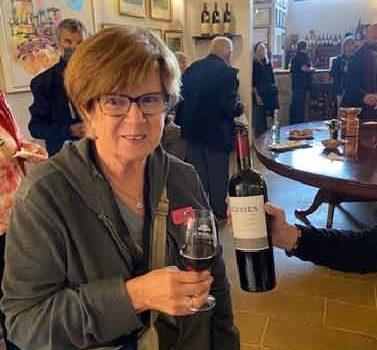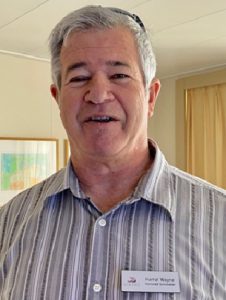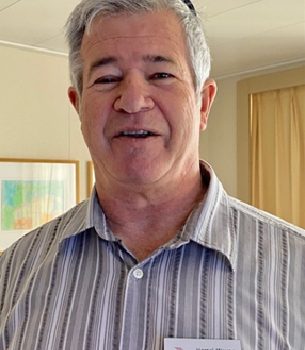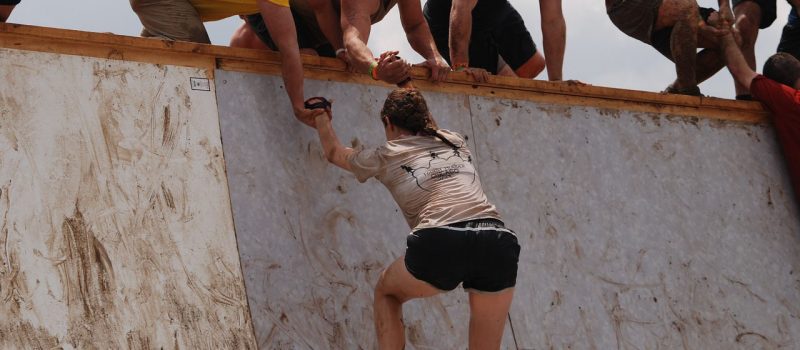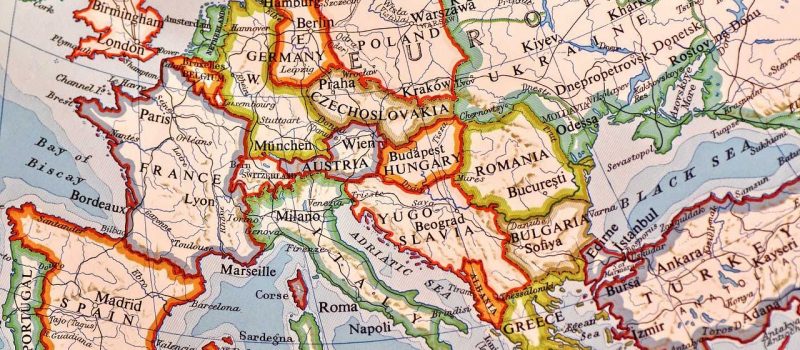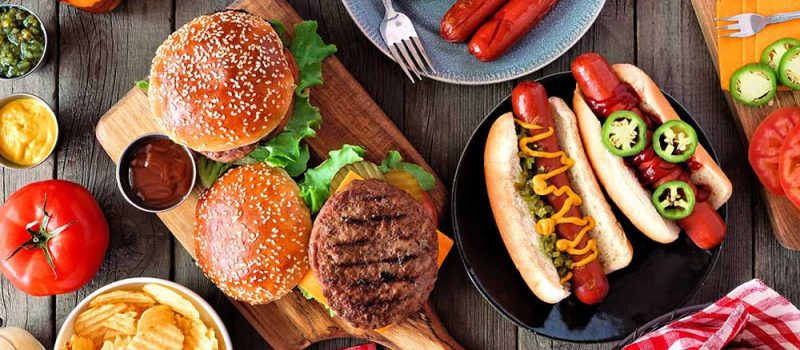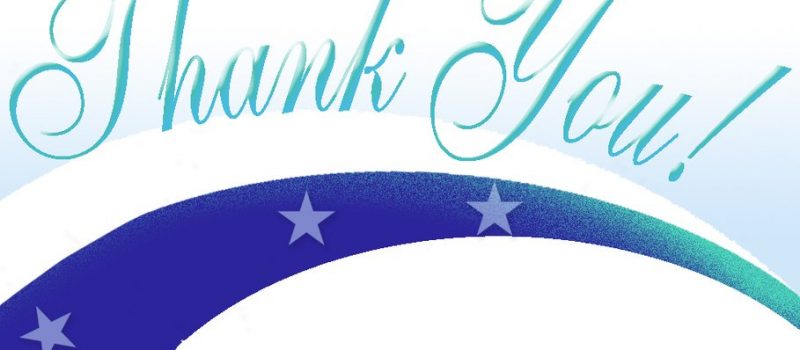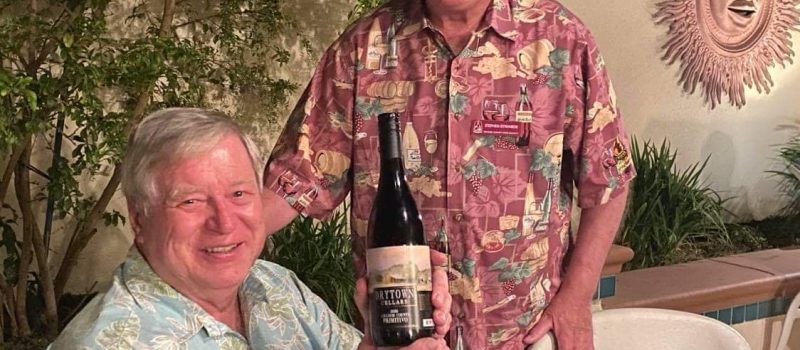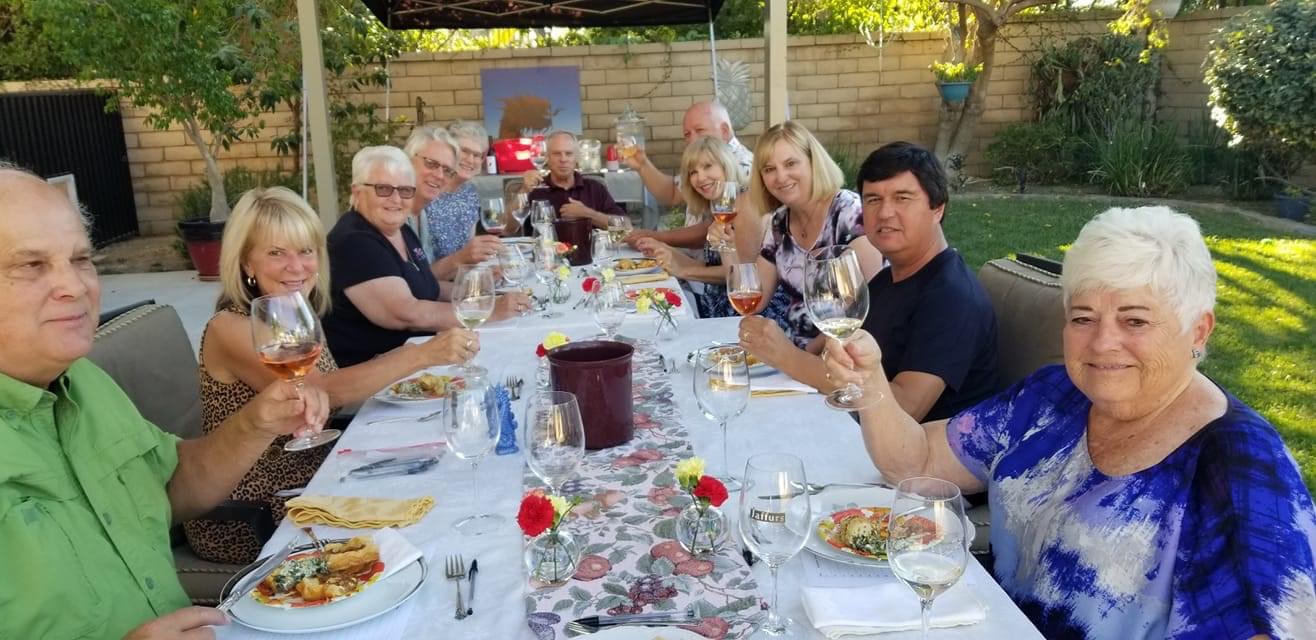A Trip Around the World Must Always Include Wine!
Our world cruise adventure continues. Since the beginning of March, our travels on the Viking Star have had us in or near the Mediterranean with only three stops on the European continent but mostly island hopping. Three notable islands were Sardinia of Italy, Malta and Corfu of Greece. Notable because these three islands, in the Med, produce some excellent wines.
Side note, we also experienced some wonderful Madeira, from the Portuguese Island of that name, as well as Sherry from the Spanish island of Mallorca. But you don’t want to hear about that, do you? Well, maybe another time. For now, let me tell you of these wonderful island-grown wines.
Now of course, we of OCWS are very familiar with mainland Italian varietals and blends, but I cannot recall any Italian wines found in California coming from Sardinia. We docked on the southern port of Cagliari and travelled inland a bit where our tour/tasting group pulled into a winery known simply as Argiolas. This is a very large family-run winery that has its origins in the early 1900s. Antonio Argiolas, the patriarch, built it up over the years and ran it with his two sons until his passing at the age of 102. There must be truth to the belief that drinking red wine protects you from diseases and will extend your life. Today, it is run by the third generation of Argiolas, three grandchildren!
After a tour of the winery by our very friendly guide, Giulia, we were hosted by the winery to enjoy their wines along with an assortment of cheeses and breads. It was not only a great experience, but the wines were fantastic. We were offered two whites and two reds, all DOC and all made from grapes grown in the family vineyards on Sardinia.
The two whites were labelled as S’Elegas made from a local varietal known as Nuragus di Cagliari (it’s a good thing I took a brochure or I would never have spelled this correctly)! Of the whites, this was my personal favorite. Manuela, on the other hand, preferred Costamolino, made from the local variety of Vermentino, a varietal that I am sure you are familiar with.
The two reds were Pedera and Cosera. Pedera was made from the Monica di Sardegna, a popular grape on the island and had a unique but excellent flavor. The Costera came from the Cannonau di Sardegna, which I learned later is the Italian name for Grenache and tasted very much like a California Grenache. It is also the most widely grown in Sardinia. Both of these were excellent, though I favored the Cannonau. These wines are available in the United States!
Our next stop was Malta. Malta has a long political history changing hands in ownership from England to Turkey. Malta gained its independence from England in 1964, but they still drive their vehicles on the wrong side, I mean the left side, of the road. Malta is located south of Sicily, the lights of which can be seen on a clear night, and it has two official languages – Maltese and English. And before I get into the winemaking, Malta is a beautiful island country that should be on your bucket list. The incredible vast limestone block structures that fortify the small cities and dominate the Old Town areas are unlike anywhere else.
Perhaps you know all this, but what was surprising to me is that Malta has a thriving local wine production.
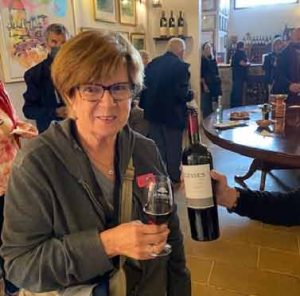 Once again, our tour group took to the road, making a trip to the Marsovin Wine Cellars in the port city of Valletta. This winery was established in 1919 and, surprisingly, was created out of a vessel storage and repair facility located within an easy reach of the Mediterranean Sea. For over a hundred years, this winery has been owned and operated by the same family starting with the brothers Cassar. But when one of the brothers dropped out, the business stayed with Anthony Cassar, then later his son, and then on to the grandchildren. Our tour was conducted by one of those grandchildren, Stephan Cassar, who clearly knew well the history and operation of the Marsovin Wine Cellars. We were shown the sparkling winemaking process in particular. Of note, 2019 was the 100th anniversary of Marsovin and had been celebrated in style with a special vintage that was hand prepared and bottled.
Once again, our tour group took to the road, making a trip to the Marsovin Wine Cellars in the port city of Valletta. This winery was established in 1919 and, surprisingly, was created out of a vessel storage and repair facility located within an easy reach of the Mediterranean Sea. For over a hundred years, this winery has been owned and operated by the same family starting with the brothers Cassar. But when one of the brothers dropped out, the business stayed with Anthony Cassar, then later his son, and then on to the grandchildren. Our tour was conducted by one of those grandchildren, Stephan Cassar, who clearly knew well the history and operation of the Marsovin Wine Cellars. We were shown the sparkling winemaking process in particular. Of note, 2019 was the 100th anniversary of Marsovin and had been celebrated in style with a special vintage that was hand prepared and bottled.
After the tour of the cellars, we were than treated to a taste of some of the wines, all made from Maltese-grown grapes, coming from either the island of Malta or Gozo, largest of the other Maltese islands. There were two white varietals by names I could not repeat. But one of the reds we tried that stood out was the Ulysses Shiraz.
In the local stores and restaurants, you could find Marsovin. In fact, later, we enjoyed a glass of Marsovin’s local reds while observing a traditional 4 pm canon salute from the nearby military batteries. Excellent!
A third Mediterranean island that makes very good wine is the Greek island of Corfu. Unlike Sardinia and Malta, which are quite some distance from the continental mainland, this island is right up against mainland Greece. In fact, it was within sight of the snow-covered Albanian mountain range to the east. We did not have a formal wine tour here, but the locally produced wine was everywhere. We tried a few at local cafés and found the wines to be excellent, particularly the whites. The photo above shows a store display in Corfu that presented only Corfu-grown varietals, with a few from mainland Greece. I could list some of the varietal names, but instead, I encourage you to come here – or to any of these wonderful Mediterranean locations – and discover some of remarkable regional wines on your own. Our trip continues for eight more weeks.
– W. Scott Harral, Contributing Writer
Hotel Reservations for Commercial Wine Competition
A Trip Around the World Must Always Include Wine!
Retirement is GREAT!!! If I had known retirement would be this great, I’d have done it sooner. OK, probably not, as there is a reason that we do work.
But I am enjoying it now. And so far I have shared with you, through my submissions to The Wine Press, a few of my experiences traveling that, most importantly, have included the delight of wine from many parts of the world. Allow me to do so again.
On Christmas Eve, now two months ago as I write this, Manuela and I embarked on a venture of a lifetime, to cruise around the world. We left from Ft. Lauderdale, Florida, heading south to the Panama Canal, with planned stops in Mexico, Nicaragua, Columbia, Panama, Costa Rica and then to Los Angeles, before heading west to Hawaii and southern Asia. Well, thanks to COVID, we never made it to Nicaragua nor Columbia. And when we got to LA, guess what? We could not leave the ship the three days we were there. More importantly, we were no longer going to go west to Asia. Instead, we were to go back south to sail along the western coast of South America, around Cape Horn, up to Uruguay – sadly, no stops in Argentina – and then over to the Mediterranean where we resumed our original itinerary in Saudi Arabia. We had just spent the day in Cape Verde, a country of ten islands off the coast of Senegal and we were about halfway through the trip.
Enough about our trip though. The good news about the changes and what I want to share with you is the incredible wineries and wines that we experienced in Chile and Uruguay. Plus, there is another little wine adventure I will tell you about.
I am sure most of you know and enjoy Chilean wines. They are extraordinary and becoming very popular in California restaurants and wine circles. On this trip, we got to go more in depth and learn about Chilean winemaking history and what it means to their wines. For one, did you know that Chilean wine is organically grown and processed? There are strict laws in place that require the vineyards to be managed without chemical treatment. And in further support of this condition, Chile also imposes restrictions on any food or plant materials coming into the country. They enjoy a very healthy grape growing environment in Chile, and they strive to keep it that way.
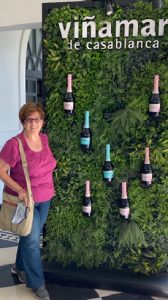 Our first stop in Chile was in the port city of Valparaiso. From here, some of us took an excursion to a winery in the region known as Casablanca. Know that this region is in central Chile and is in the same latitudes south as the wine-growing regions of California, France, Italy and other wine regions of Europe are to the north, between the 30th the 38th parallels. Thus, this is an ideal growing region for wine grapes. The winery we visited was called Viñamar. While Chile grows and makes the usual vitis vinifera (old world) reds and whites, Chile is known for its Carmenere. Like Argentina’s Malbec, Carmenere originated in France, transferred to Chile and flourished there. Some of the great wines we had in Chile included Carmenere from Viña Tarapacà (my top pick) and San Pedro Castillo de Molina Pinot Noir Reserva. There were so many more.
Our first stop in Chile was in the port city of Valparaiso. From here, some of us took an excursion to a winery in the region known as Casablanca. Know that this region is in central Chile and is in the same latitudes south as the wine-growing regions of California, France, Italy and other wine regions of Europe are to the north, between the 30th the 38th parallels. Thus, this is an ideal growing region for wine grapes. The winery we visited was called Viñamar. While Chile grows and makes the usual vitis vinifera (old world) reds and whites, Chile is known for its Carmenere. Like Argentina’s Malbec, Carmenere originated in France, transferred to Chile and flourished there. Some of the great wines we had in Chile included Carmenere from Viña Tarapacà (my top pick) and San Pedro Castillo de Molina Pinot Noir Reserva. There were so many more.
After several more days of visiting Chile and sailing around Cape Horn, we stopped in Uruguay. Have you heard of Uruguayan wine? Well, I hadn’t either, but it was fantastic.
From our port stop in Montevideo on the mouth of the Plate River that separates Uruguay and Argentina, we visited a winery inland near a town called Canelones. Some more background, the wine region of Uruguay is between the 30th and 35th parallels. It is in the same latitudes as Mendoza, Argentina, and of the Chilean wine region we had just visited a few weeks earlier. That should tell you something!
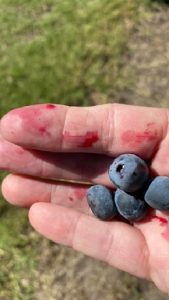 Once there we were given the grand tour of Familia Deicas Winery. Because we were in the southern hemisphere, it was approaching harvest time, so we observed the field labor teams organizing to hand pick the grapes. In Uruguay, the grape of choice is Tannat, but the usual varietals were grown there as well. One unusual grape was called Lacryma Christi or the Tears of Christ. The fruit was sweet and had a bright red juice. See the picture.
Once there we were given the grand tour of Familia Deicas Winery. Because we were in the southern hemisphere, it was approaching harvest time, so we observed the field labor teams organizing to hand pick the grapes. In Uruguay, the grape of choice is Tannat, but the usual varietals were grown there as well. One unusual grape was called Lacryma Christi or the Tears of Christ. The fruit was sweet and had a bright red juice. See the picture.
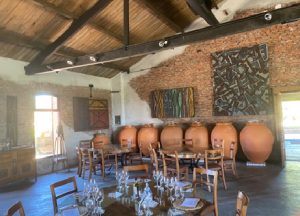 Back in the cellar we enjoyed seven of their wines that included the Tannat, Pinot Noir, Chardonnay, and another popular white, Albariño. Some were sold under the name Don Pascual. It was a great day and memorable experience!
Back in the cellar we enjoyed seven of their wines that included the Tannat, Pinot Noir, Chardonnay, and another popular white, Albariño. Some were sold under the name Don Pascual. It was a great day and memorable experience!
If you should ever get the opportunity to travel to South America in search of great wine (or otherwise), you will find it in Chile, Argentina and Uruguay, for sure.
After departing Uruguay, we headed for the African coast. Along the nine-day voyage I was given a wonderful opportunity. Some background, while we were in the Port of Los Angeles, though we could not leave the ship, I did arrange for several bottles of my homemade Nebbiolo to be brought onboard.
The day after we departed LA was my birthday. So, we celebrated in style sharing my wine with some of the passengers and crew. Well, somehow, I was asked to make a presentation on home winemaking. “I would love to!” Not knowing exactly what to do though, I reached out to Kevin Donnelly. Wow, he was great! He provided me with his 110-page PowerPoint presentation on home winemaking! After a few modifications and including a few photos of my own winemaking experience both at home and in Italy, I made the presentation. Wine was provided by the Viking Bar Manager Andrej and Sommelier Dejan while I made the presentation to a packed theater of about 45 people. It was a great success. I have even been made an honorary sommelier on board the Viking Star, and I have the badge to prove it.
We still have 2½ months to go, and we will be hitting many Mediterranean ports which will include more visits to wineries such as in Malta.
So a follow up to this story just might be in order.
– W. Scott Harral,
Contributing Writer
With a New Year Comes New Challenges
President’s Message – New Year’s Resolutions
Scott & Manuela’s European Winetasting Experience (and Winemaking)
Fellow OC wine enthusiasts, you bared with me a few issues back as I relayed my anniversary/wine tasting experience in Northern California. Perhaps I can keep your interest as I tell you of Manuela’s and my six-week trip tip through France, Switzerland, Germany, Czech Republic and, of course, Manuela’s home country of Italy. It was there that I not only sampled great wine, I got a chance to make it—the old fashioned way!
But that is to come later.
We started off on a river cruise up the Rhône River, from Avignon to Lyon, France, with two other wine-drinking couples. If you are familiar with this region you know we passed through the Rhône Valley appellation. Along the way, we tasted some very good wines such as the Rhône blends, similar to our GSM’s, as well as some Pinots and Syrahs. Among the whites, we found the Viogniers to be excellent. The wines here in France tended to be earthy, dry and subtle in flavor. Very drinkable now but worthy of aging some. Then there is the famous Champagne! We shared quite a bit of that product, I can tell you. My personal favorite was Drappier, Corte d’Or, Brut.
What was to be a highlight of the trip was a stop in the Châteauneuf-du-Pape. We attended a tasting set up by the cruise line. The wines were inexpensive and, to my taste, reflected that. Most of the Americans there did not favor these wines. Not giving up, however, the guys sought out a better experience while the wives went shopping! In fact, we found the best wine tasting shop – appropriately named “Best Wine Shop.” We enjoyed thoroughly the one-on-one experience with the shop owner and ultimately shipped a case of wine back to the US! Closer to Lyon, we encountered Burgundy and Beaujolais wines from further north. These were excellent wines that included Gamay, Pinot, Merlot, Chardonnay and a few names I could not possibly pronounce. Not as earthy as the Rhône wines, but excellent to our California pallets. In fact, I would say, they save the best for themselves and export the lesser quality wines abroad! And these wines were not expensive.
Departing the ship in Lyon, we drove to just past Lausanne, Switzerland, staying at an Airbnb in the home of a winemaker on the mountain slope overlooking Lake Geneva. It was beautiful! Take a look at the shot from our dining room window. We ate fondue and raclette but also enjoyed some very nice Swiss wine. The grapes grown here were predominately white varietals, but there were some good reds as well. I don’t think I’ve run across Swiss wine in our wine shops. My guess, they just don’t make enough. Although the hillsides were overwhelmingly covered by vines. My friends and I had no qualms about drinking the local product! Of particular note was the 2020 Heida made by Yvonne & Yvo Mathier. I hope to find that here in California.
At the end of our stay in Switzerland, our friends returned home, but Manuela and I drove over the Great St. Bernard Pass and down into the Piemonte region of Italy – where Manuela was born – for a three-week stay in Chiaverano, Italy, near Ivrea. Yeah, you will need to Google those names. Here we were immersed in Northern Italian wines from Piemonte, Asti and, of course, Tuscany. Some of my personal favorite wines come from these regions such as Nebbiolo, Barbera, Dolcetto, Montepulciano and little-known, Erbaluce (grown predominately around Ivrea). Sixty-eight percent of these wines are red, and for good reason: It’s the weather and terroir.
While drinking great wine from the regions we visit is always a pleasure, the true joy of this trip – and the reason behind my writing this article – was the chance to join one of Manuela’s relatives, Pierluigi, in the winemaking process! Timing for our trip was just right, and being a home winemaker myself, that when I got invited to see the crush and participate, I was all in. As is common with the decades-old homes of the area, Pierluigi’s comes equipped with a wine cellar, where he has been making wine all his life.
This was the real thing … well, the real old-world thing. We put several kilograms of grapes and stems in an old wine press. As you can see from the photo, I was an “instrumental” part of the process. When all was done, we opened one of his 40-year-old bottles of wine. OK, it wasn’t that good at that point, but it sure was exciting to know we were drinking something that old and very special.
Toward the end of our three weeks in Italy, my brother and his wife joined us for a few days of Alpine experience, her first. But soon we were flying from Milan to Prague, Czech Republic. The city of Prague is on my personal top ten places that I have been fortunate enough to visit in my lifetime. It has a rich heritage and beautiful buildings, bridges and structures nearly everywhere in its massive old city. And yes, Czech Republic makes wine! Almost exclusively white wine, but there are a small percentage of reds. And the varietals include many you know and some you most likely do not.
After a few days in Prague, we commenced another river cruise that primarily sailed west along the Main River through southern Germany, part of the Rhine River and finally the Moselle River. We had stops in wonderful old world cities such as Nurenberg, Bamberg, Wurzburg, Heidelberg, Cochem and Trier. More local wine, predominately white, was to be had everywhere along these rivers. The dry Gewürztraminers and Viogniers were great. Reds were a bit more challenging to our taste. Ultimately we ended our trip with four days in Paris. I treated my brother, his wife, and a former colleague and his wife to a dinner cruise on the Seine River in Paris. We had great local cuisine and fine white wines. In return, he treated us at a very high-end, old world (established in the 1600’s he says) Parisian restaurant that was outstanding. All told, our six weeks in Europe was one for the books!
– W. Scott Harral, Contributing Writer
Welcome Back, OCWS, to In-Person Events—BBQ, a Raving Success
Calling the recent membership BBQ a raving success is an understatement. It was clear that OCWS members were more than ready to safely re-engage in person when the event sold out in record time online, and attendance was at full capacity. With awesome food provided by our own Cooks Caucus group, terrific live music by the Three 2 Sevens Band, fun games and, needless to say, terrific wines from the OCWS cellar, the event was destined to be a hit from the very start.
Standing ovations go out to our very own Cooks Caucus which reconvened in style after the COVID-19 hiatus to feed 180 hungry attendees with custom homemade fare, with special kudos going to Lynda Edwards, Bob Topham, Rich Skoczylas, Brian McDonald, George Cravens, Zach Anderson, Bonnie Gausewitz, Dan Donati and Peter Schlundt-Bodien. Additional thanks go out to their day-long support system comprised of Frances Cravens, Linda Flemins, Chris & Hank Bruce, and Teri & John Lane, as well as the many other volunteers and Board members who met every other need to run the event from start to finish.
Without all of our amazing volunteers, this event would not have been as incredible as it was. It was truly an event that gave us all something to celebrate—an amazing organization filled with warm-hearted, fun members. Thank you.
– Sara Yeoman & Fran Gitsham, Event Co-Chairs
Volunteer Recognition Program
While we didn’t hold in-person events for most of the year, we did have many virtual events. Fortunately, we were able to hold our three most volunteer-intensive events in 2021 – The Commercial and Home Wine competitions and The Courtyard. In recognition of the hours of service, the Wine Society rewards its volunteers with gift certificates redeemable for admission to OCWS events. Thank you to the following volunteers for their efforts during the 2020/2021 Board year. Our volunteers make this the successful organization that it is. We encourage you to get involved. It is a great way to see how the OCWS works and meet new friends. Over the year, we had 299 members volunteer, and together they put in over 15,500 hours in total. NOTE: The volunteer coupons will be posted to each member’s account and can be used for events through October 1, 2022. – George Cravens, Volunteer Program Chair
| Award Coupon Recipients |
| $50 Discount Coupon | $25 Discount Coupon | $10 Discount Coupon |
|
Courtney Dawn Bergen-Iglesias Leslie Brown Chris & Hank Bruce Pam Carter Damien Christian Sam Clark Liz & Lloyd Corbett Kevin Coy Noel De Sota Jim Downey Wendy Eld Sue England Kate & Charles English Linda Flemins Ellen Flynn Bill Forsch Fran Gitsham Jane Goodnight Larry Graham Kim & Jerry Guerin Greg Hagadorn Donna Hisey Michael Iglesias Virginia & Karl Kawai Cheryl & Ken Knapp Theresa & John Lane Kevin Lite Mary Mulcahey Marcy Ott Bruce Powers Rochelle Randel Bill Redding Walter Reiss Ed Reyes Germaine & Rob Romano David Rutledge Scott Sayre Peter Schlundt-Bodien Jack Shepard Scott Shuster Robyn & Dean Strom Wendy & Stacey Taylor Bob Topham Barb & Dave White Tony Wieczorek Jolen Zerosk |
Anke Bajhart Judy Chapel Kim Clark Adrienne & Ray Davis Kimberly & Ross Doering Dan Donati Lynda Edwards Nancy & Stephen Edwards George Euan Kathy & Claude Fusaro Alison & Mark Godleski Cimberly Gonzales Kay Gooding Kelly Hagadorn Kelly Haggard Scott Harral Will Holsinger Helga Hrowal Lynelle Hustrulid Shelly Jayne Michael Johnson Janice Mattar Monica McCarthy John Nation Cathy & Lee Painter Maia Pehrson Alice Polser Debbie Renne Janet Riordan Ronna & Craig Rowe Karen Russell Irene & Raul Serna Linda Shepard Tom Tippett Shelly Trainor Daniel Vlahovic Richard Ward Deborah Webber |
Laura Acocella Shilo & Ray Bartlett Greg Basile Laura Brown Shelley & Louis Cohen Michael Cox Maria Coy Mary & Michael Czerniachowski Chris Danoff Michael Del Medico Gloria & Dennis DeRosia Liane Donati Rochelle Donovan Sharon & Yale Finkle Carol Frank Beverly Genis Patty Hansen Cheryl Heinecke Laurie Kjar-Reiss Roxanne Korzeniowski Kathy Krieger Kendall Madsen Roger Mattar Sue McDonald John Molina Leland Mote Joanne Oldfield George Ott Mike Paz Linda Peters Elee & Don Phillips Laurie Preus Carolyn Redding Roger Reiss Deborah Reynolds Jean Rico Greg Risling Victoria Rivera Kim & Steven Rizzuto Elisa & Wilton Roddy Kathy & Brad Russo Denise Scott Lori Shapiro Tricia Shelton Ted Simon Dave Stancil Nancy & Gerard Unterreiner Jean Ventri-Wilson Lisa Viceroy Michael Webber Spencer Wilson
|
Gold Medal Mini-Tasting Results
Nearly 170 members and guests attended this year’s Gold Medal Mini-Tasting at 14 host sites around the county. The lineup of wines consisted of ten Double Gold winners, served in pairs of the same varietal/style. Three of these wines were also Best of Class.
The blind tasting included five flights of two wines each. The varietals/styles included Viognier, Pinot Noir, Mourvedre (and a Rhone red with Mourvedre as the largest percentage), GSM (Grenache/Syrah/Mourvedre), and Zinfandel. Nine of the 10 wines finished in the top three at one or more sites.
The Gold medal mini-tasting is unique among the mini-tastings in that each flight is a different varietal/style, so the overall scores say more about the attendees’ personal preferences than about the wines. Our group clearly loves Zinfandels. The two Zinfandels in the lineup got the highest scores overall (by a wide margin) and the third highest scores (one point behind the second place wine).
See WineCompetition.com for details on the medal winners and a link to the winery websites for the competition winners.
The top six wines using the combined scores across all attendees are listed below:
| Place | Winery & Wine Name | YR | PRICE | DESCRIPTION and SCORES |
| 1st | Macchia – Mischevious
Old Vine Zinfandel Lodi AVA |
2019 | $22.00 | 97 pt. Double Gold, Best of Class. This wine was the top choice at seven of the fourteen sites.
52 1st, 29 2nd, and 20 3rd place votes on attendees’ scoresheets. |
| 2nd | Bellante – Figlio e Nuora
Mourvedre, Los Olivos District, Camp 4 Vineyard. |
2018 | $50.00 | 96 pt. Double Gold.
This wine placed in the top three at five of the fourteen sites. 22 1st, 18 2nd, and 13 3rd place votes on attendees’ scorecards. |
| 3rd | Peirano Estate –
The Heritage Collection Old Vine Zinfandel Lodi Appellation |
2018 | $11.99 | 92 pt. Double Gold. Two first and two third place finishes across the fourteen sites.
18 1st, 21 2nd, 19 3rd place votes on attendees’ scorecards. |
| 4th | Wood Family Vineyards GSM Livermore Valley AVA |
2019 | $36.00 | 94 pt. Double Gold. Two first, one second, and two third place finishes across the fourteen sites.
17 1st, 22 2nd, 19 3rd place votes on attendees’ scorecards. |
| 5th | Carol Shelton Wines
Coquille Rouge Rhone Style Red Central Coast AVA |
2019 | $25.00 | 93 pt. Double Gold. Three first, one second, and one third place finishes across the fourteen sites.
18 1st, 19 2nd, 15 3rd place votes on attendees’ scorecards. |
| 6th | Sculpterra – Repousse’
GSM, Paso Robles Estrella District AVA |
2019 | $46.00 | 94 pt. Double Gold. Three second and one third place finishes across the fourteen sites.
10 1st, 24 2nd, 19 3rd place votes on attendees’ scorecards. |
In addition, attendees brought a delicious dish to share and then voted on a Chef of the Evening. The results of the Chef of the Evening at each host site are:
- Hosts Gisella & Greg Brett: Lisa Viceroy “Pulled Pork Sliders”
- Hosts Chris & Hank Bruce: Markee Fritschle “South African Meat Loaf”
- Hosts Nancy & Stephen Edwards: Rich Skoczylas “Pinot Noir Braised Short Ribs”
- Hosts Carol Frank & Sam Puzzo: Adrienne Davis “Cowboy Beans”
- Hosts Virginia & Karl Kawai: Carolyn Christian “BBQ Chicken Tacos”
- Hosts Mike & Cathy MacKenzie: Scott Lewis “Smoked Tri-Tip with Mushroom Appetizer”
- Hosts Betty Jo & Jay Newell: Irene Scott “Chicken Manicotti”
- Hosts Don & Elee Phillips: Kelly Reins “Pulled Pork”
- Hosts Greg & Cathy Risling: Kim Meier “Ginger Pear Cake”
- Hosts Ronna & Craig Rowe: Linda Downey “Pork Roast & Cranberry Sauce”
- Hosts John & Denise Scandura: Susan Clark “Lemon Bars”
- Hosts Wendy & Stacey Taylor: Noel de Sota & Bill Forsch “Osso Bucco”
- Hosts Marcia & James Vaughan: Sandro Leyva “Chicken Chili Verde”
- Hosts Jolen & Amie Zeroski: Greg Hagadorn “Tiramisu”
Congratulations to all the winners! A big Thank You to the Hosts!
– George Cravens, Director

